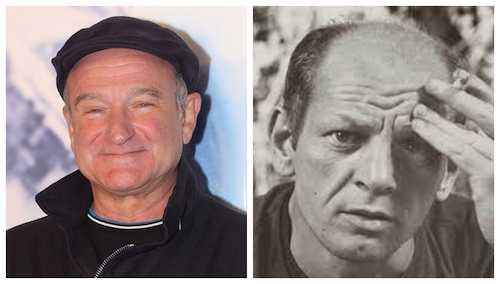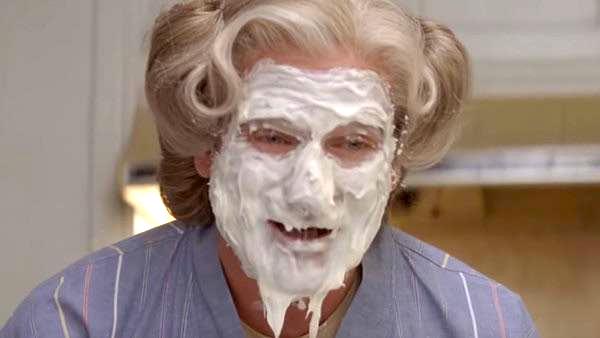by Jarrett Hoffman
THE CLEVELAND ORCHESTRA CHORUS:
Auditions for the 2021-22 Cleveland Orchestra Chorus and Blossom Festival Chorus will be held August 17, 20, and 29 at First Baptist Church. Schedule an audition here, and read the full press release here.
TODAY’S ALMANAC:
In figurative terms, jazz is an easy connection to see between actor/comedian Robin Williams and painter Jackson Pollock, who both died on this date in history — in 2014 and 1956, respectively.
Among his many comedic and dramatic talents, Williams was known as a brilliant improviser, from his celebrity impressions as the genie in Aladdin, to the memories of his wife breaking wind in her sleep in Good Will Hunting, to the way he responded to frosting unexpectedly melting and dripping from his face into cups of tea in Mrs. Doubtfire. (Watch that amazing scene here.)
Speaking of dripping, Pollock’s wildly abstract canvases, sporting his trademark style of drip painting, have often been compared in their freedom and structure to jazz, particularly the avant-garde style of bebop that was prevalent at the time. Saxophonist Ornette Coleman saw such a strong similarity that he featured Pollock’s White Light on the cover of his 1960 album Free Jazz.
As far as music performance, Williams comes out on top, having delivered memorable musical numbers in films such as Aladdin, Popeye, and Happy Feet, and even onstage at the 2000 Academy Awards. Not only does he have good pitch, but his high-energy comedic style translates to his vocalizing, which is full of character and manic pizzazz. (Plus, he learned to play the saxophone for his performance in Moscow on the Hudson, apparently advancing quite quickly in lessons, such that he could play a jazz solo within a month.)
On the other hand, Pollock couldn’t carry a tune, according to his wife, painter Lee Krasner. But as a listener, he was obsessed. “He would get into grooves of listening to his jazz records,” she said, “not just for days — day and night, day and night for three days running, until you thought you would climb the roof! The house would shake.”
But what kind of jazz was Pollock listening to? It wasn’t, in fact, bebop. His record collection was dominated by music from his youth, from the ‘20s and ‘30s, especially Dixieland. The modern style of jazz simply wasn’t to his taste — one Charlie Parker LP in his collection was a gift from his lover Ruth Kligman, who assumed it would be up his alley. It wasn’t. Describing his taste in music, she called him “a real square.”
Whichever type of jazz he preferred, it’s colorful to imagine Pollock painting for hours and hours while dancing around the canvas listening to music. But that doesn’t seem to be the case either — his studio, a converted storage barn, didn’t even have electricity until 1953, “by which time Pollock had already painted virtually all the dynamic poured paintings that have been likened to improvisational jazz compositions,” writes Helen A. Harrison, director of the Pollock-Krasner House and Study Center, in a terrific essay about Pollock and jazz.

Above: Pollock’s famous 1950 work Autumn Rhythm (Number 30)
It’s very possible that Pollock took inspiration from jazz, but it’s interesting to note that when given the opportunity to choose music to accompany the short film Jackson Pollock 51, he did not recommend that genre. Watch an excerpt of the film here, and listen at 2:53 for music written by Morton Feldman especially for the occasion, who scored as if for choreography, the composer said.
We’ll close this article with music that Pollock would apparently like to hear when visiting one of his regular spots, the East Hampton, NY tavern then known as Jungle Pete’s. (That brings up another, more tragic connection between Williams and Pollock: long battles with alcoholism.)
The musicians at Jungle Pete’s may have rolled their eyes at Pollock’s old-fashioned requests, like I Can’t Give You Anything But Love, Baby, but Louis Armstrong and the Savoy Ballroom Five played that song to beautiful effect in 1929 — a recording in Pollock’s collection. Listen here.





